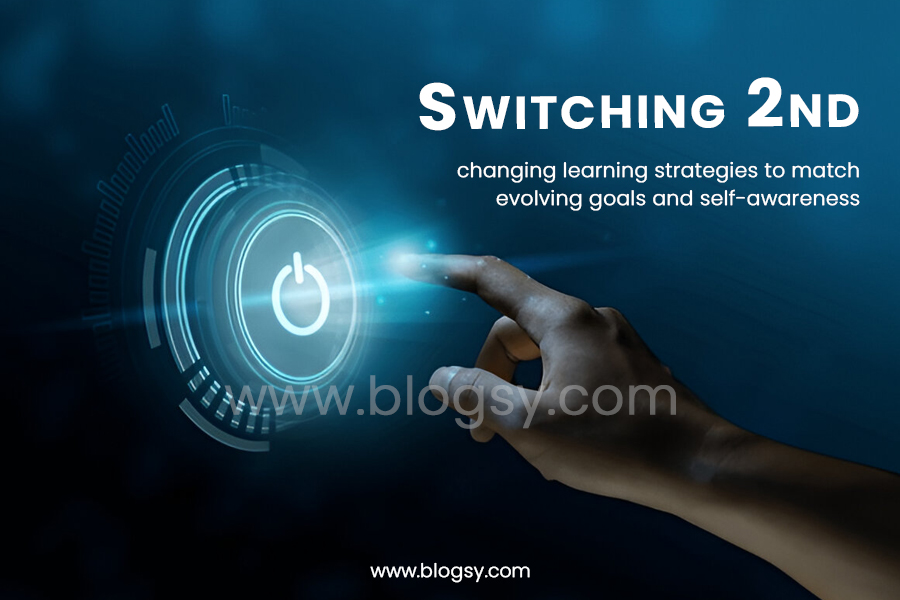
Switching 2nd refers to the academic and personal transition where a student makes a shift in their educational journey during or before the second stage of learning. In many cases, switching 2nd can mean moving into a different curriculum, adapting to a new school environment, or changing learning strategies to match evolving goals and self-awareness. For students, parents, and teachers, this stage is often filled with questions, concerns, and opportunities.
In today’s fast-changing educational landscape, transitions like switching 2nd are becoming increasingly common. Families seek what’s best for a child’s growth, not just academically but also emotionally and socially. Understanding why these shifts happen, what benefits they bring, and what challenges they create is essential for making informed decisions.
This comprehensive guide will walk you through everything you need to know about switching 2nd—from definitions and reasons to strategies, expert insights, and future trends.
Understanding Switching 2nd
Switching 2nd is not just about “moving up” a grade—it goes deeper. It represents a transition where learners realign their education with their strengths, ambitions, or personal circumstances. For example, a child who finds traditional classroom methods difficult may shift to a more interactive or digital-based system during the second stage of schooling.
At its core, switching 2nd is about adaptation. Education systems worldwide are evolving to provide flexibility, ensuring that students who need adjustments aren’t left behind.
Key aspects of switching 2nd include:
-
Academic Shift – Moving to a different curriculum, subject stream, or teaching style.
-
Psychological Shift – Building self-awareness, confidence, and resilience.
-
Social Shift – Adjusting to new peers, environments, or expectations.
Reasons for Switching 2nd
Every student’s journey is unique, and so are the reasons behind switching 2nd. Some of the most common include:
1. Academic Performance and Challenges
Students sometimes feel they aren’t thriving in their current learning system. Switching allows them to explore alternative methods better suited to their pace.
2. Change of Interest or Learning Style
As children grow, their interests shift. A student fascinated by sciences in one year may lean toward arts the next. Switching 2nd can provide room for this exploration.
3. Psychological and Social Factors
Bullying, peer pressure, or a lack of emotional support can push students to switch schools or classes.
4. Parental and Teacher Influence
Parents and educators, seeing untapped potential or challenges, may guide the decision to switch for better outcomes.
Benefits of Switching 2nd
Switching 2nd, though sometimes stressful, can bring tremendous benefits if handled properly.
-
Personalized Learning: Students can match their education with their unique style.
-
Confidence Boost: Overcoming challenges builds resilience and motivation.
-
Goal Alignment: The switch often brings students closer to long-term academic or career goals.
-
Adaptability: Experiencing change early helps develop life skills for future transitions.
Challenges in Switching 2nd
While the benefits are clear, switching 2nd also comes with hurdles:
-
Emotional Stress: Students may struggle to leave familiar environments.
-
Curriculum Gaps: Adjusting to new systems may cause temporary academic difficulties.
-
Social Dynamics: Making new friends and fitting in can take time.
-
Expectations and Pressure: Parents and teachers may unintentionally add stress.
Strategies for a Smooth Switching 2nd Transition
To make switching 2nd successful, a thoughtful plan is essential.
-
Academic Preparation: Review the new curriculum in advance.
-
Emotional Resilience: Encourage open conversations about fears and excitement.
-
Parental Support: Consistent encouragement builds security.
-
Peer Mentoring: Connecting with students who’ve already switched helps ease the journey.
Comparing Switching 2nd with Other Academic Shifts
| Aspect | Benefits of Switching 2nd | Challenges of Switching 2nd |
|---|---|---|
| Academic Performance | Tailored learning paths improve understanding and outcomes. | Possible curriculum gaps may cause temporary setbacks. |
| Emotional Growth | Builds confidence, adaptability, and self-awareness. | Emotional stress from leaving familiar environments. |
| Social Development | Opportunity to meet new peers and expand networks. | Difficulty adjusting to new friends and group dynamics. |
| Learning Style Fit | Better match between teaching methods and student preferences. | Requires an adjustment period to adapt to new methods. |
| Long-Term Goals | Aligns education with future career or personal ambitions. | Risk of uncertainty if the switch is poorly planned. |
| Parental/Teacher Role | Encouragement and guidance strengthen student motivation. | High expectations may put added pressure on the student. |
| Flexibility | Opens doors to different curricula, streams, or schools. | It may create confusion if too many options are considered. |
Expert Opinions on Using it
Switching 2nd is a complex decision that affects students not only academically but also emotionally and socially. To understand its impact better, let’s explore what different experts say about this transition.
-
Psychologists: Psychologists emphasize that the key to a successful switching 2nd transition lies in resilience, open communication, and emotional support. They note that children going through such changes may experience anxiety or fear of the unknown. However, when parents and teachers create a safe space for dialogue, these worries can be transformed into confidence.
-
Teachers: Teachers are often the first to notice when a student is struggling in their current environment. Many educators believe that switching 2nd, when planned with clear academic goals, can lead to noticeable improvements in student engagement and performance.
-
Parents: Share mixed experiences, but many report long-term benefits for their children. Parents generally have mixed feelings about switching 2nd. While the initial stages may bring uncertainty and worry, many parents later recognize the long-term benefits. Some highlight that their children became more independent and resilient after making the switch. Others emphasize how their child’s academic motivation and social skills improved in a new environment.
Common Misconceptions
-
“Switching means failure.” – False. Switching is often about aligning with strengths. This is perhaps the most common misunderstanding. The truth is, switching 2nd is rarely about failure—it’s about finding the right fit. A student may switch because they learn better in a more interactive system, not because they failed in the previous one. In fact, many successful individuals credit early educational shifts as pivotal moments in their journey.
-
“Students lose opportunities.” – In fact, many gain more. On the contrary, switching often creates more opportunities. By aligning education with strengths and interests, students can explore new subjects, extracurriculars, and even international curriculums that might have been inaccessible otherwise.
-
“It’s rare.” – With modern flexible systems, it’s becoming increasingly common. Switching 2nd is becoming increasingly common, especially with globalization and diverse education systems. Families moving between countries, or parents seeking better methods for their children, often consider switching as a normal part of the learning process. Schools today are more flexible, with bridges and programs designed to support such transitions.
- Switching confuses children: While there may be an adjustment period, research shows that children are naturally adaptable. With proper support, most students embrace the change positively, gaining new social and academic experiences.
Future of Academic Transitions like Switching 2nd
Education is no longer a rigid system where every child follows the same path. The future points toward flexibility, personalization, and technology-driven learning, making transitions like switching 2nd smoother and more effective.
AI-powered platforms can analyze a student’s strengths, weaknesses, and interests, offering personalized recommendations. This means that before a switch happens, both parents and teachers can predict how well a student might adjust, reducing uncertainty.
Adaptive learning tools adjust content in real-time based on a student’s progress. This makes switching easier, as students can catch up on any curriculum gaps quickly. For example, if a student moves from a rote-based system to a problem-solving approach, adaptive apps can bridge the difference.
Society is slowly embracing the idea that education should be student-centered, not system-centered. In the future, switching 2nd will be seen not as a disruption but as a natural adjustment in a student’s learning journey.
As families move across borders for work or lifestyle, education systems are adapting to make switching 2nd more seamless. International schools, online academies, and global curriculum frameworks (like IB and Cambridge) ensure that students don’t lose progress when they switch.
Conclusion
Switching 2nd is far more than a routine academic adjustment—it is a life-defining transition that shapes how students see themselves, their learning, and their future. While the process can be challenging, it offers unique opportunities to grow stronger, more adaptable, and better aligned with long-term personal and academic goals.
For students, switching 2nd can unlock hidden potential, expose them to new environments, and teach resilience in the face of change. For parents, it is a chance to support their child with patience and encouragement, guiding them through uncertainties while celebrating progress. And for educators, it is an opportunity to innovate teaching methods, making learning more inclusive and adaptable.
It is important to remember that challenges—such as emotional stress, academic gaps, or social adjustments—are not signs of failure. Instead, they are stepping stones toward independence, problem-solving, and confidence. With the right strategies, open communication, and supportive networks, students can turn these challenges into valuable lessons that last a lifetime.
FAQsDon’t miss out on any news—keep in touch for real-time information, visit: Blogsy.!
Q1: What age is ideal for switching 2nd?
Generally, it occurs around early middle school years, but it depends on the system.
Q2: Does switching 2nd affect university admission?
No, universities value adaptability and diverse experiences.
Q3: How to prepare a child for switching 2nd?
Gradual exposure, positive discussions, and clear guidance help.
Q4: Is switching 2nd common worldwide?
Yes, especially in countries with multiple curriculums and global families.
Don’t miss out on any news—keep in touch for real-time information, visit: Blogsy.!



